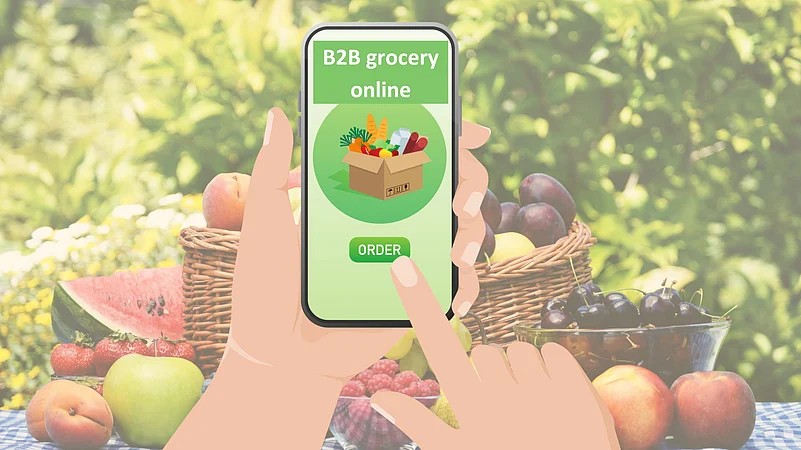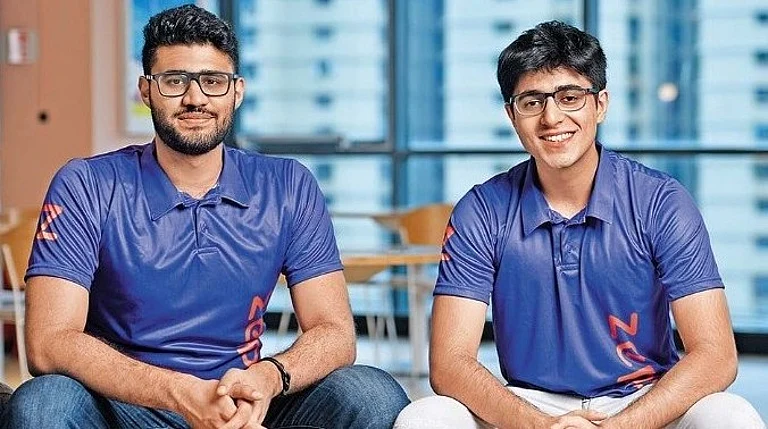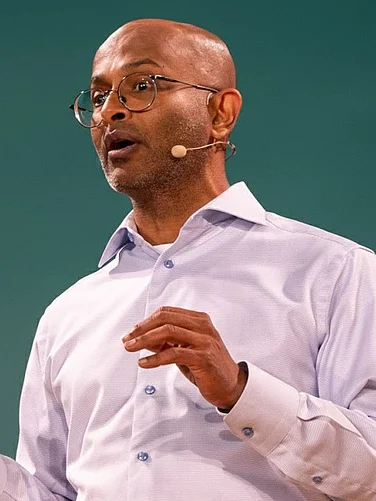When Zomato published its FY24 results last Monday, it was largely celebrated for the 20 per cent quarter-on-quarter (Q-o-Q) growth showed by Blinkit, the company’s quick commerce business. However, it was difficult not to miss the stagnation of its flagship food delivery business which registered a paltry 2 per cent Q-o-Q growth. But, besides the booming quick commerce sector and the stalling food delivery arm, the company also seemed to have cracked another business before the rest of its rivals.
While Blinkit’s revenue for FY24 almost tripled to Rs 2,300 crore from the previous year, Zomato’s B2B grocery business—Hyperpure—also returned impressive numbers. The revenue from the B2B arm that delivers groceries and other necessities to the Horeca (Hotel, restaurant and cafe) segment doubled year-on-year in FY24 to Rs 3,172 crore.

The Hyperpure business gains relevance for Zomato as it looks for its next growth engine amid the saturation of its food delivery business. A B2B business in the Horeca segment would involve the delivery of groceries and other necessities to hotels and restaurants for their daily requirements. Experts call the B2B grocery segment an “interesting opportunity” and the “right area to venture” for companies that have already established logistic capabilities in the B2C space.
“Aggregated distribution with the right quality is a challenge to be solved and there are many unorganised players with fragmented value chain in this space. India definitely needs this (business model),”says Rishav Jain, Managing Director, Alvarez & Marsal. India’s food market in terms of the value of products demanded in the Horeca industry is estimated to be worth Rs 1 to 1.5 lakh crore, according to industry estimates. So then, what is stopping the others from exploring this space?
Zomato’s Headstart
Although all the four players— Zomato, Swiggy, Zepto and BigBasket—have comparable operations in the quick commerce business, experts point out that their B2C success may not be easy to replicate in the B2B space. It takes time for a new player to scale and make money in this segment.
“High AOV (average order value), which is more than Rs 600, is critical to make positive economics in quick commerce, which allows for foray into new business areas. Food delivery platforms have the right network both at the buyer and the seller end, to venture into B2B food distribution for the foodservice segment,” says Alvarez & Marsal’s Jain.
But the two food delivery giants, Zomato and Swiggy, differ vastly when it comes to AOV in its express grocery delivery segment. Zomato’s Blinkit clocks an impressive AOV of Rs 635, while it is only Rs 450 for Swiggy Instamart. In fact, Instamart’s AOV is the same as Zepto which lacks a food delivery platform, as per a report on quick commerce by investment bank JM Financial.

Zomato also had an early-mover advantage for its B2B business as it entered the B2B segment by buying Hyperpure in the middle of 2018, much before its acquisition of Blinkit in mid-2022. By the end of that year, Zomato was already servicing more than 30,000 B2B customers in the Horeca segment.
While Swiggy and Zepto have largely stayed silent about their intentions towards B2B business, BigBasket has been testing the waters via its ‘bbsaathi’ platform. The Tata-backed company launched the application on the Android Play Store in August 2023 and currently has more than 10,000 downloads. Meanwhile, Zomato's Hyperpure application has clocked over one lakh downloads since its release on the Play Store in June 2016.
The Intricacies of a B2B Marketplace
Other players from the non-internet era who have been around and shown interest in the B2B segment also pose stiff competition to quick commerce operators who want to tap into the demand side of Horeca establishments.
“A lot of B2B players are already invested in the sector. For instance, Jio has shown interest in this business through its Metro wholesale and other solutions. Maybe there is space for another player, but Zomato has an advantage with its early move (into the segment),” says Shravan Shetty - Managing Director at Primus Partners India.
Industry watchers point out that Swiggy will find its task cut out if it were to venture into the B2B space at this point. While Swiggy has in place the infrastructure to deliver groceries, opening a new business arm requires a lot more investment. It will have to first stabilise its quick commerce business before it thinks of going to the next ground, Jain says.
While a B2B grocery business may seem like an adjacency for these companies, the contours and capabilities required are very different from that of a quick commerce business. “Both are different games altogether. In B2C, your benefits are around last-mile connectivity, while in B2B the capabilities needed are more in terms of procurement and larger supply chain,” Shetty adds.
This is where having a good demand from both the buyer side (i.e. restaurants) and seller side (i.e. grocery stores) of the B2B business benefits Zomato more than other players such as Zepto and BigBasket.
For instance, Zomato boasts 2.7 lakh restaurant partners as of March 2024, while its rival Swiggy has partnered with 1.5 lakh as per its website. In Zomato’s case, Hyperpure’s revenue also saw healthy growth ever since the acquisition of Blinkit.
.png?w=550&auto=format%2Ccompress&fit=max&format=webp&dpr=1.0)
“Hyperpure has also begun tapping into the quick commerce opportunity. Part of the revenue growth in Q3FY23 was on account of goods supplied to the sellers on Blinkit’s marketplace. Hyperpure is well placed to monetise this opportunity given its strengths around sourcing and supply chain,” Zomato had said in its shareholders’ letter for the quarter ending December 31, 2022. Zomato’s B2B business has registered double-digit quarter-on-quarter growth in its revenue in each of the last eight quarters.
But companies such as Zepto do not have a buyer-side network of restaurants that their seller-side grocery business can tap into. Yet another challenge others planning to venture into this segment are likely to face is what their stakeholders expect of the company.
Aligning the Funds
With Zomato already listed on the bourses, and trading at nearly 2.5 times its issue price, it enjoys the market’s confidence to play aggressively on its winning bets. The company raised as much as $1.26 billion in its stock market debut in June 2021, when its quick commerce arm Blinkit (then known as Grofers) was yet to be acquired.
For the other players considering the B2B segment, a lot will depend on how their VCs (venture capitalists) and private equity partners view their options. An entry into the B2B segment could mean a larger cash burn for them and the VCs might not be that keen on getting into this kind of scenario, according to Shetty. They would rather want their existing quick commerce to stabilise before looking at other areas. “So, Zomato has that advantage when you compare it with Swiggy and others,” he says.
It is also important to note that Swiggy is already preparing for its IPO after having last raised $46.4 million in a Series K round in August 2023. In April this year, the company was valued at $12.7 billion by Invesco, one of its backers. So far, Swiggy has raised significantly more funds ($3.6 billion) than Zepto ($590 million), as per data from startup data platform Tracxn.
While the B2B opportunity is big and there for the taking, challenges are aplently for the quick commerce players who are already struggling with the unit economics of its primary businesses. Setting up a widespread distribution network with the Horeca industry and leveraging a dual presence buyer—on the buyer and seller side—will be the first steps to be taken if they are keen on this segment. But while they work on all this, and attempt to get their investors on board, Zomato stands the chance to speed ahead with its B2B headstart.





























